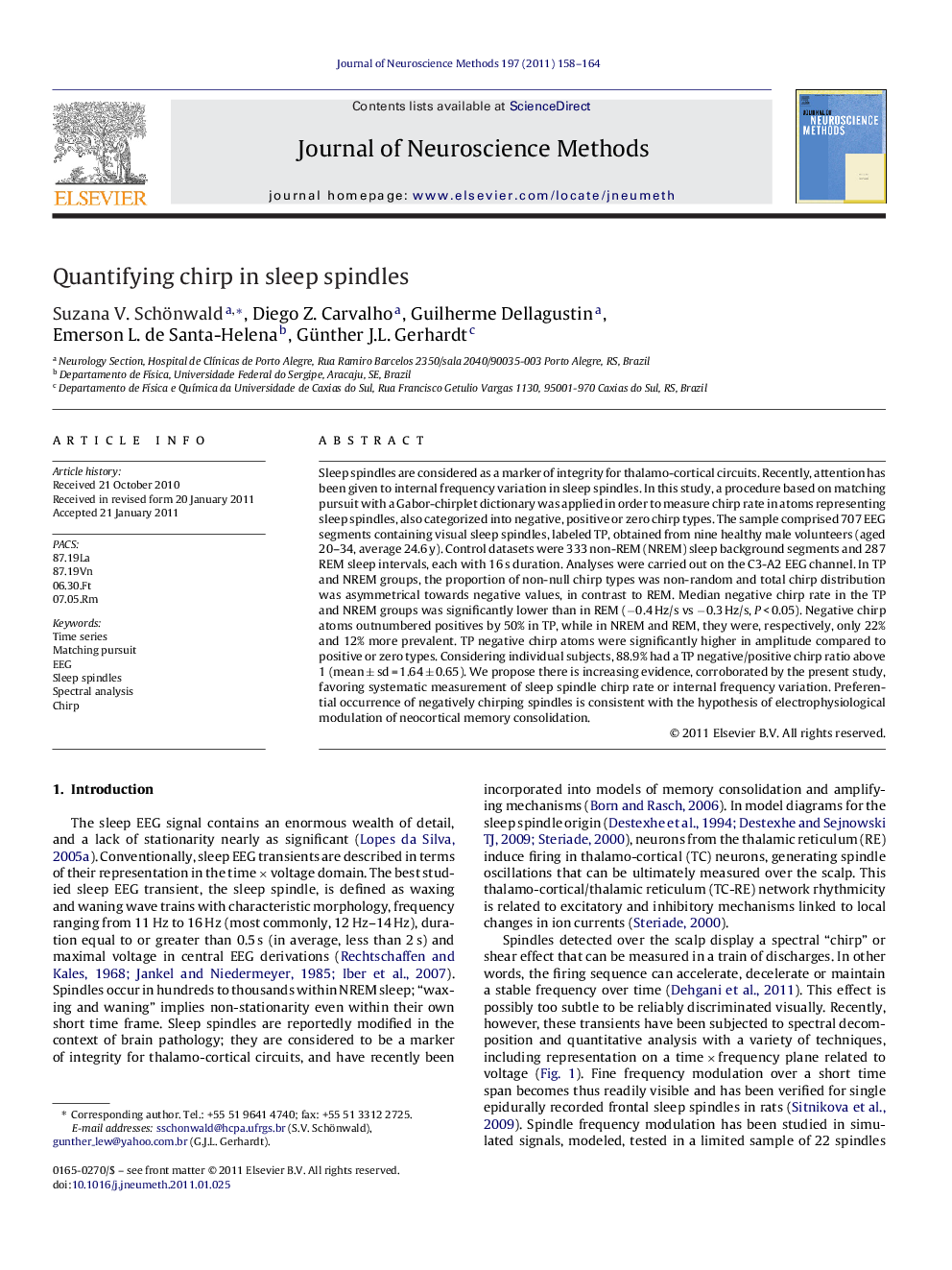| کد مقاله | کد نشریه | سال انتشار | مقاله انگلیسی | نسخه تمام متن |
|---|---|---|---|---|
| 6269773 | 1295159 | 2011 | 7 صفحه PDF | دانلود رایگان |

Sleep spindles are considered as a marker of integrity for thalamo-cortical circuits. Recently, attention has been given to internal frequency variation in sleep spindles. In this study, a procedure based on matching pursuit with a Gabor-chirplet dictionary was applied in order to measure chirp rate in atoms representing sleep spindles, also categorized into negative, positive or zero chirp types. The sample comprised 707 EEG segments containing visual sleep spindles, labeled TP, obtained from nine healthy male volunteers (aged 20-34, average 24.6 y). Control datasets were 333 non-REM (NREM) sleep background segments and 287 REM sleep intervals, each with 16 s duration. Analyses were carried out on the C3-A2 EEG channel. In TP and NREM groups, the proportion of non-null chirp types was non-random and total chirp distribution was asymmetrical towards negative values, in contrast to REM. Median negative chirp rate in the TP and NREM groups was significantly lower than in REM (â0.4 Hz/s vs â0.3 Hz/s, P < 0.05). Negative chirp atoms outnumbered positives by 50% in TP, while in NREM and REM, they were, respectively, only 22% and 12% more prevalent. TP negative chirp atoms were significantly higher in amplitude compared to positive or zero types. Considering individual subjects, 88.9% had a TP negative/positive chirp ratio above 1 (mean ± sd = 1.64 ± 0.65). We propose there is increasing evidence, corroborated by the present study, favoring systematic measurement of sleep spindle chirp rate or internal frequency variation. Preferential occurrence of negatively chirping spindles is consistent with the hypothesis of electrophysiological modulation of neocortical memory consolidation.
Research highlights⺠Sleep spindles and NREM had chirp distribution asymmetrical towards negative values. ⺠Median negative chirp rate in TP and NREM lower than in REM: â0.4 Ã â0.3 Hz/s, p < 0.05. ⺠Negative chirp atoms outnumbered positives by 50% in TP, 22% in NREM and 12% in REM. ⺠TP negative chirps had higher amplitude compared to positive or zero types. ⺠Most (89%) individuals had TP Neg/Pos chirp ratio above 1 (mean ± sd = 1.64 ± 0.65).
Journal: Journal of Neuroscience Methods - Volume 197, Issue 1, 15 April 2011, Pages 158-164